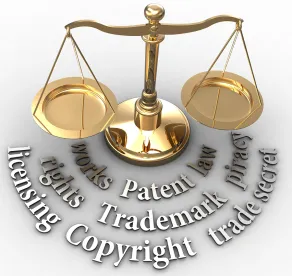As businesses experience diminishing revenues, falling stock prices, and other economic hardships resulting from Coronavirus Disease 2019 (COVID-19), some economists project the possibility of an unprecedented number of business bankruptcies. Some of these businesses own brands, and some have entered into relationships, most commonly trademark licenses, under which they allow others to use their brands. What happens to a trademark license when a brand owner becomes insolvent, particularly in the context of a reorganization under Chapter 11?
One year ago, on May 20, 2019, the United States Supreme Court answered that question in Mission Products Holdings, Inc. v. Tempnology, LLC, 139 S. Ct. 1652 (2019), holding that a trademark license is breached, but not rescinded, when a brand owner “rejects” the trademark license as part of a bankruptcy reorganization. In other words, the benefits afforded to an insolvent brand owner under bankruptcy law do not include the right to terminate the licensee’s right to continue using the licensed trademark, unless the license says so. As discussed below, this begs the question of whether, in the event of insolvency, there is value in rejecting a trademark license that features traditional boilerplate. The Tempnology decision suggests that brand owners should create greater termination rights when drafting, negotiating, and renewing their trademark licenses going forward.
Tempnology owned the brand COOLCORE for athletic apparel and granted a non-exclusive license to Mission to use the COOLCORE trademark. Before expiration of the license, Tempnology filed a petition for Chapter 11 bankruptcy (reorganization). In the course of the bankruptcy, Tempnology determined it was no longer economically worthwhile to license the COOLCORE mark to Mission and rejected the trademark license.
Under Chapter 11 of the Bankruptcy Code, if neither party to a contract has fully performed yet (a so-called “executory contract”), a debtor can either assume (cure any defaults and continue to perform) or reject (stop performing, subject to breach-of-contract damages) such a contract. The general idea is that if the executory contract is a bad deal in the debtor’s business judgment, the bankrupt business can walk away, and such rejection will be treated as a breach of contract. The counterparty becomes an unsecured creditor with a claim for money damages for the breach of contract.
Even though the parties agreed that Tempnology could reject the contract, and that the rejection of the contract would give rise to Mission’s breach-of-contract claim against Tempnology, the parties disagreed on whether Mission could continue to use the COOLCORE trademarks under the trademark license agreement, or whether such rights were terminated upon rejection.
On the one hand, and a view held by the Court of Appeals for the First Circuit, the Bankruptcy Code lists only a few specific kinds of agreements under which a counterparty may continue to exercise contractual rights after rejection (leases, patent licenses, etc.), and trademark license agreement is not on the list. Additionally, trademark law requires brand owners to exercise quality control over the use of licensed marks, and failure to exercise such control may invalidate a trademark. Requiring a bankrupt brand owner to monitor trademark use after it rejects a trademark license agreement (or else suffer the consequences) would undermine the benefit of escaping burdensome obligations through bankruptcy, according to the First Circuit.
On the other hand, and a view held by the Court of Appeals for the Seventh Circuit, if rejection of an executory contract is at bottom a breach of contract, breach of contract does not normally extinguish the contractual privileges received by the non-breaching party.
The Supreme Court granted certiorari to resolve these two competing views.
In short, the Supreme Court adopted the view of the Seventh Circuit: a brand owner’s rejection of a trademark license agreement does not end the licensee’s right to continue using the licensed trademark. Furthermore, an insolvent brand owner, through rejection of a trademark license agreement, cannot escape its obligation to either control the quality of the licensed goods or risk invalidation of the trademark. This decision may have repercussions for the brand owner, the trademark licensee, and competitors.
Application of Tempnology
So, what can brand owners and trademark licensees do to prepare for the possibility of insolvency events? The Supreme Court’s short, essentially unanimous opinion (only Justice Gorsuch dissented, but not on the merits; he viewed the question presented as moot), and the concurring opinion of Justice Sotomayor, offer several answers to that question for forward-looking counsel.
First, the Court made clear that parties to a trademark license remain permitted to agree to contractual provisions stating that an insolvency event automatically terminates the contract. Typical boilerplate allows the solvent party to elect to terminate the license agreement (so, for example, a brand owner does not have to deal with an insolvent licensee, and vice versa). And, although the parties are free to agree otherwise, such boilerplate typically does not entitle the insolvent party to terminate the license. Moving forward, when drafting and negotiating a license agreement, parties should carefully consider whether they want their own hypothetical bankruptcy, not just that of their counterparty, to allow them to terminate the trademark license agreement.
Second, insolvent brand owners (and their trustees) considering rejecting trademark licenses may wish to exercise caution. Rejection may have little upside to a brand owner, and some brand owners may be served better by negotiating the mutual termination of the agreement or some other transaction, such as a sale of the mark, that effectively terminates the agreement. As made clear by the Tempnology decision, rejection will not stop the licensee from using the licensed mark(s),1 will not necessarily relieve the brand owner from the duty (imposed by trademark law) to supervise the quality of the licensed goods/services, but will subject the brand owner to damages depending on the relevant terms in the agreement and their treatment under state law. To make matters worse for the brand owner, rejection may end the licensee’s obligations to comply with the quality control provisions (because executory agreements must be assumed or rejected in their entirety, not piece-by-piece). Thus, rejection potentially creates a dangerous Catch-22 for brand owners, because quality control is the fundamental tenet of trademark licensing and serves as the bellwether for proper licenses versus “naked” licenses that undermine the validity of the brand owner’s trademarks. Accordingly, insolvent brand owners may primarily benefit from rejection when there are other more compelling obligations under the agreement that they are relieved from performing.
Third, the holding in Tempnology does not extend to licenses for essentially all other types of intellectual property,2 including patents, copyrights, and trade secrets, which are subject to unique treatment under the Bankruptcy Code that does not apply to trademark license agreements. A licensee that elects to retain its license for these types of intellectual property must pay all of its royalties due under the license for the duration of the license and cannot deduct from those payments any damages it may have under other nonbankruptcy law.3 This may be significant for parties to intellectual property agreements that involve licenses of multiple types of intellectual property, especially those that combine other intellectual property rights with the right to use trademarks.
In the coming months and years, as the full economic impact of COVID-19 takes effect, distressed businesses that license intellectual property may benefit from reviewing their rights under all intellectual property agreements, applicable state law, and the Bankruptcy Code to formulate strategic plans for insolvency scenarios.
From the perspective of the brand owner considering hypothetical insolvency, such strategic plans may involve obtaining the contractual option to terminate the license if an insolvency event occurs. Brand owners may wish to renegotiate trademark licenses being renewed to potentially better position themselves in the event of a breach of contract arising from rejection of the license in bankruptcy. Trademark valuation and prospects for selling marks may also be evaluated.
Meanwhile, businesses that rely on trademark licenses and other intellectual property licenses from brand owners may wish to monitor the financial health of those brand owners. If the financial health of a brand owner appears to be weakening, licensees may consider reviewing their intellectual property agreements to determine possible consequences of insolvency and to uncover available options for mitigating harm (for example, where appropriate and legally permitted, amendment to the license). Additionally, trademark licensees may consider acquiring valuable licensed assets in the case of a licensor insolvency event, because the purchase price may be less than the fees under a long-term license. And in the negotiation for any new trademark licenses or the renewal of an existing trademark license, the parties may wish to review the so-called boilerplate provisions relating to breach, termination, and bankruptcy with great scrutiny and with an understanding of the Tempnology decision.
1 As Justice Sotomayor noted in her concurrence, the holding in Tempnology does not mean that “every trademark licensee has the unfettered right to continue using licensed marks postpetition” because what happens upon breach under applicable non-bankruptcy law is the starting point for assessing rights under rejected trademark licenses.
2 Chapter 11 of the Bankruptcy Code defines “intellectual property” as a “trade secret, invention, process, design or plant protected under title 35, patent application, plant variety, work of authorship protected under title 17, or mask work protected under chapter 9 of title 17, to the extent protected by applicable nonbankruptcy law.” 11 U.S.C. § 101(35A).
3 Id. § 365(n).





 />i
/>i
